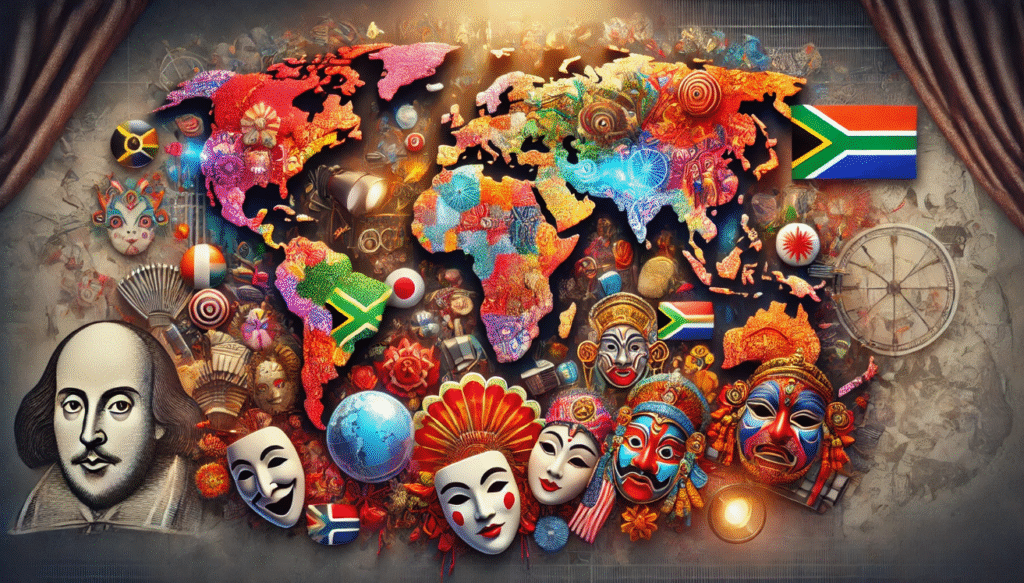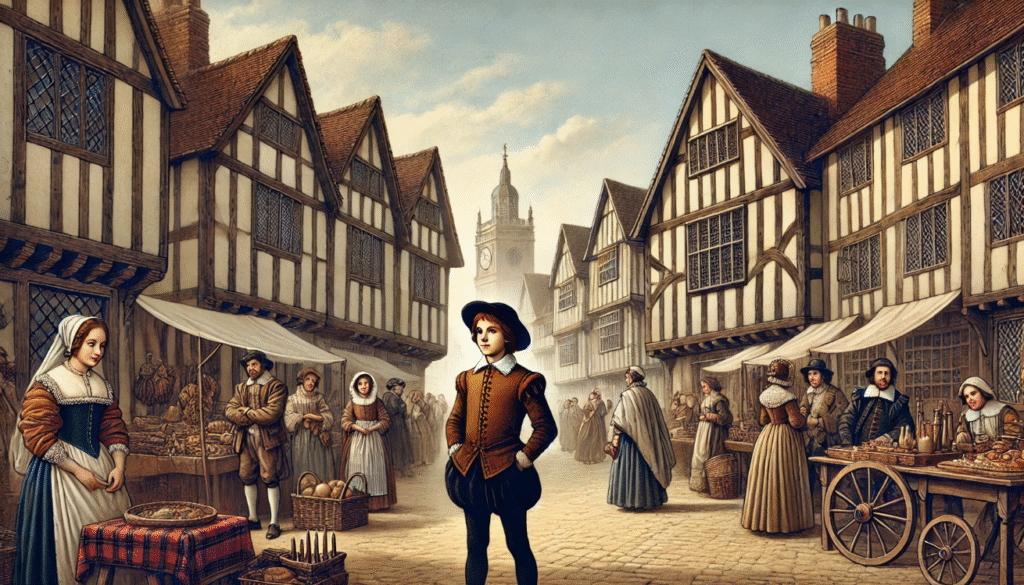 Why do stories written over 400 years ago still resonate with audiences across the globe? The adaptation of Shakespeare’s plays in different cultures answer lies in the adaptation of Shakespeare’s plays in different cultures, a phenomenon that continues to inspire directors, writers, and performers worldwide. Shakespeare’s timeless tales of ambition, love, betrayal, and power are more than relics of the past—they are living, breathing narratives that take on new life in every culture they touch. From the bustling streets of modern Mumbai to the tranquil stages of Japanese Noh theatre, his plays are constantly reimagined, reflecting local customs, values, and storytelling traditions. This article explores how and why.
Why do stories written over 400 years ago still resonate with audiences across the globe? The adaptation of Shakespeare’s plays in different cultures answer lies in the adaptation of Shakespeare’s plays in different cultures, a phenomenon that continues to inspire directors, writers, and performers worldwide. Shakespeare’s timeless tales of ambition, love, betrayal, and power are more than relics of the past—they are living, breathing narratives that take on new life in every culture they touch. From the bustling streets of modern Mumbai to the tranquil stages of Japanese Noh theatre, his plays are constantly reimagined, reflecting local customs, values, and storytelling traditions. This article explores how and why.
Why Shakespeare Transcends Borders

The adaptation of Shakespeare’s plays in different cultures plays are told in many languages, performed on every continent, and adapted into countless cultural forms—and there’s a reason for that. The adaptation of Shakespeare’s plays in different cultures stories speak to the core of what it means to be human. The adaptation of Shakespeare’s plays in different cultures whether it’s love in Romeo and Juliet, ambition in Macbeth, or jealousy in Othello, the emotions and struggles are universal.
Another reason for the adaptation of Shakespeare’s plays in different cultures is their flexible structure. His plots are strong but open-ended, allowing directors to shift settings, time periods, and even characters without losing meaning. That’s why a single play can feel at home in Elizabethan England or modern-day Africa.
Shakespeare also explores moral questions, power dynamics, and personal identity—themes every culture can relate to. His words may be old, but his ideas remain fresh and relevant.
In short, Shakespeare transcends borders because his works reflect our shared humanity.
The Cultural Lens: How Local Values Shape Adaptations

Every culture sees Shakespeare through its own lens. That’s what makes the adaptation of Shakespeare’s plays in different cultures so fascinating—each version reflects local values, beliefs, and traditions.
For example, in India, family honor and social duty often take center stage. This is clear in Omkara, a Hindi adaptation of Othello, where loyalty and betrayal are tied to caste and politics. In Japan, Macbeth becomes Throne of Blood, set in a samurai world shaped by fate and silence. African adaptations, like uMabatha, retell Macbeth using tribal leadership and oral storytelling.
Costumes, language, music, and setting all change to fit the local culture. But the core of Shakespeare’s stories remains strong. These adaptations don’t just translate words—they translate meaning. They show how universal themes like ambition, love, and justice are viewed differently around the world.
In the end, cultural adaptations reveal as much about the culture doing the adapting as they do about Shakespeare himself.
Case Studies: Shakespeare Around the World

The global appeal of Shakespeare is best seen through real examples. These case studies show how the adaptation of Shakespeare’s plays in different cultures brings new meaning to familiar stories.
- India – Omkara (2006): Based on Othello, this Bollywood film uses political power and caste issues to explore jealousy and betrayal. The music, setting, and language reflect rural Indian life, making the story feel local yet universal.
- Japan – Throne of Blood (1957): Akira Kurosawa transforms Macbeth into a haunting tale set in feudal Japan. Samurai codes replace Scottish honor, and traditional Noh theatre influences the acting style and atmosphere.
- South Africa – uMabatha (1970): This Zulu-language version of Macbeth places the story in pre-colonial Africa. It uses rhythm, dance, and oral storytelling to highlight tribal leadership and destiny.
- China – The Banquet (2006): Inspired by Hamlet, this film weaves in elements of Chinese royal court drama and Confucian values. The focus is on duty, revenge, and family power.
- These adaptations prove that Shakespeare is not just translated—he’s transformed. Each version reflects the values, conflicts, and creativity of the culture it comes from, while keeping the heart of the story alive.
Language and Performance: Translating Shakespeare

One of the biggest challenges in the adaptation of Shakespeare’s plays in different cultures is language. His original English is rich with wordplay, rhythm, and old expressions that don’t always translate easily. But that hasn’t stopped global artists from bringing his words to life in new and powerful ways.
Some translations focus on keeping the meaning, even if the exact words change. Others try to capture the emotion and tone, using local sayings or rhythms to make the dialogue feel natural. In Japan, for example, Hamlet might be performed in a slow, meditative style influenced by Noh theatre. In Africa, performances may use call-and-response or drums to build energy and mood.
Acting styles also shift with culture. A dramatic pause in one place might become a bold dance in another. Costume, movement, and even silence are all tools that help translate Shakespeare beyond words.
These performances prove that Shakespeare isn’t just about the language—he’s about the feeling behind it. When done well, cultural adaptations can move audiences, even if they don’t speak a word of English.
What These Adaptations Teach Us About Culture

Studying the adaptation of Shakespeare’s plays in different cultures helps us learn more than just theater—it teaches us about people, values, and worldviews.
Each adaptation reflects what matters most in a society. In India, we see themes of family honor and politics. In Japan, the focus may be on fate and restraint. In African versions, community and oral tradition take center stage. These choices show how cultures view power, love, betrayal, and justice differently.
Cultural adaptations also help us understand how stories evolve. They remind us that even old tales can be made fresh and meaningful when told through a local voice.
In the end, these adaptations reveal that Shakespeare’s plays are not just English classics—they are global mirrors, reflecting the beliefs and emotions of cultures around the world.
How to Explore These Adaptations as a Reader or Viewer

If you’re curious about the adaptation of Shakespeare’s plays in different cultures, there are easy and exciting ways to start exploring.
Watch Global Adaptations Online
Platforms like YouTube, Netflix, and film archives often feature international versions of Shakespeare’s plays. Look for titles like Omkara (India), Throne of Blood (Japan), or u Mabatha (South Africa).
 The global journey of Shakespeare’s plays shows us just how powerful stories can be when they cross cultural borders. Through the adaptation of Shakespeare’s plays in different cultures, we see how universal themes—like love, power, betrayal, and justice—are reshaped to reflect unique local values and traditions.
The global journey of Shakespeare’s plays shows us just how powerful stories can be when they cross cultural borders. Through the adaptation of Shakespeare’s plays in different cultures, we see how universal themes—like love, power, betrayal, and justice—are reshaped to reflect unique local values and traditions.
These adaptations do more than entertain. They open windows into different ways of thinking, helping us understand how people from around the world view life, relationships, and society. Whether on stage, on screen, or on the page, each version adds something new to the Shakespeare we thought we knew.
By exploring these global interpretations, we don’t just learn more about Shakespeare—we learn more about the world, and about ourselves.













